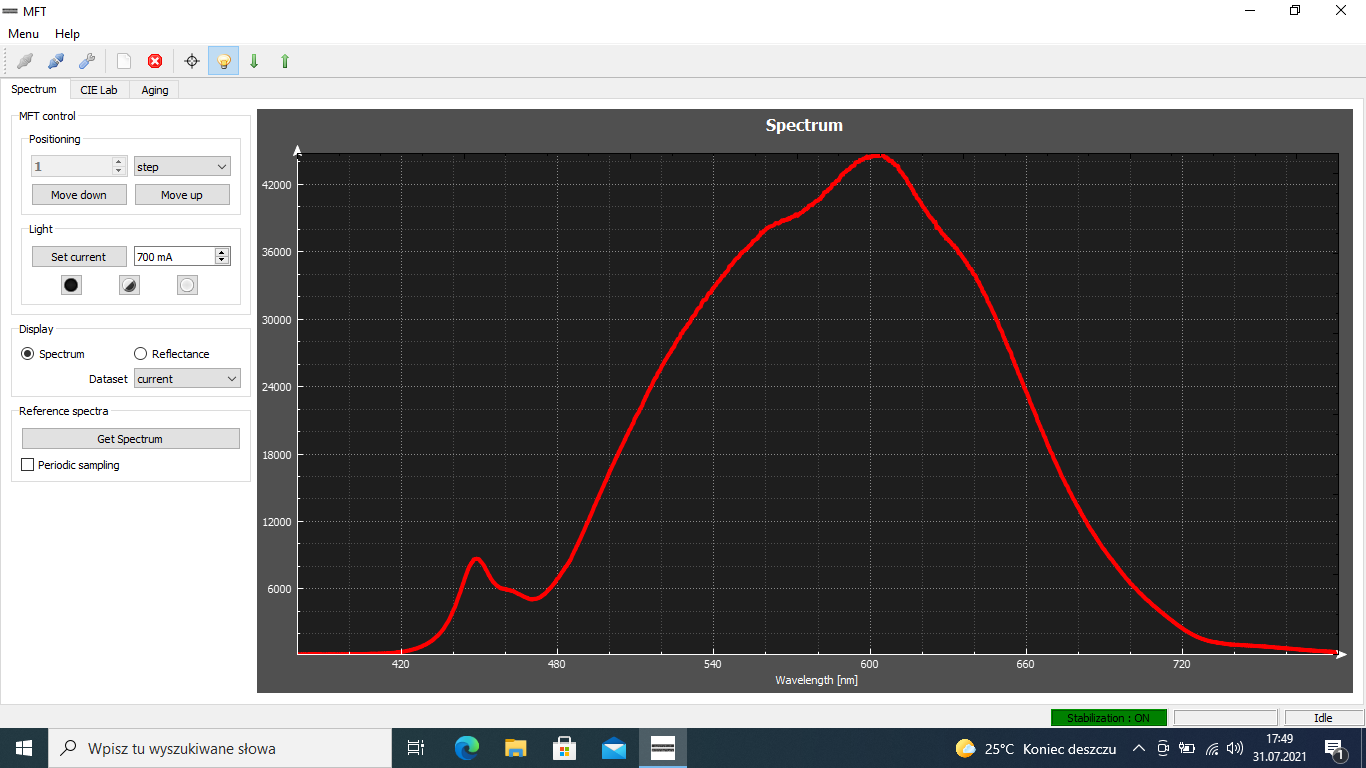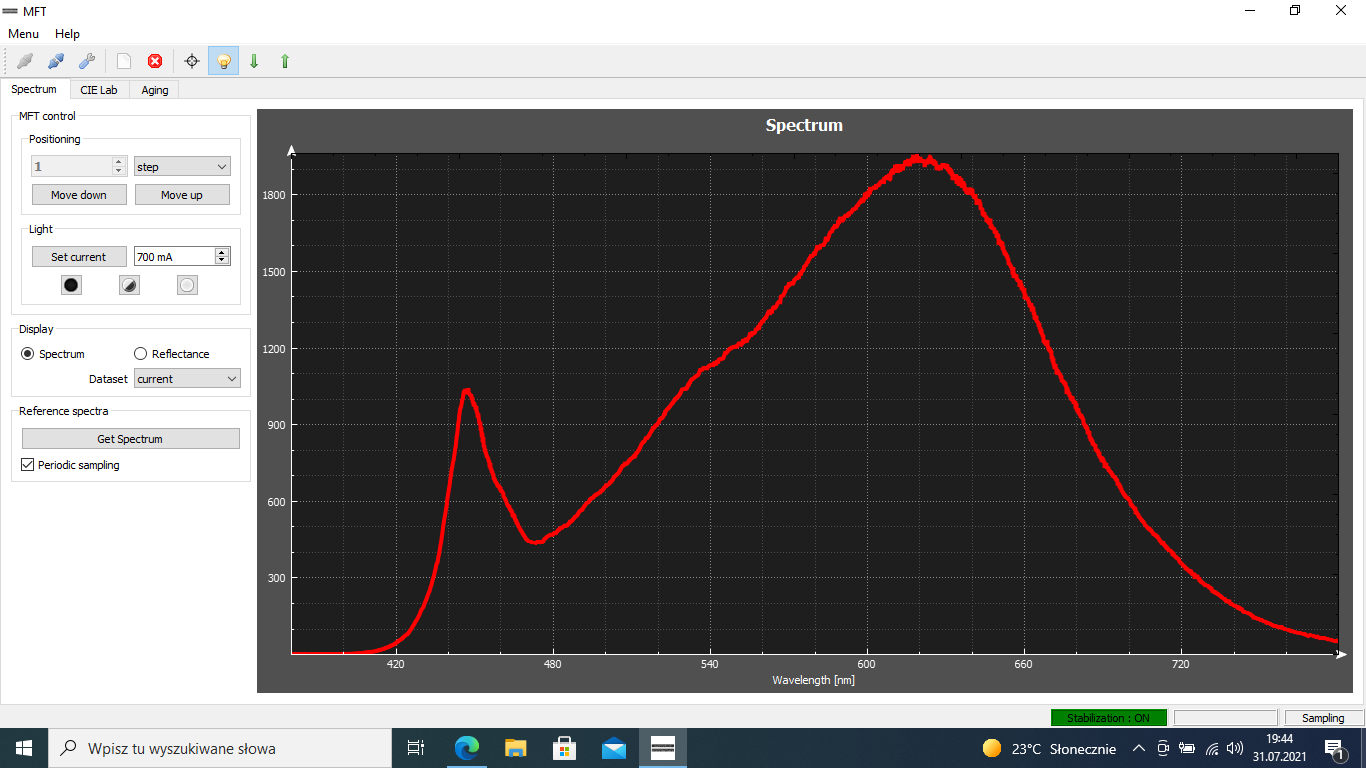Announcement
Starting now, all new MFTs will be equipped with new design spectrometers.
So, far we have used great instruments from B&W Tek. They served us well for past 4 years, but we decided to design our own version of the spectrometer for fedometry.
Reasons for the change
These are the main reasons for the switch:
- we will have more control over their performance, so will provide better support for you guys
- there will be no extra drivers necessary because the driver for the MFT will handle the spectrometer as well
- it is quicker these days for us to manufacture a spectrometer than to import it from the USA (mostly due to unreasonable customs delays)
- the new spectrometers have built-in light intensity calibration
Intensity calibration
The last point can be illustrated by the following pictures of the Fotolon white standard reflected spectrum measured with the same white LED at the same driving current of 700 mA with B&W Tek

and with the intensity calibrated Fotonowy CCD spectrometer

The vertical axis in the B&W Tek plot shows just the internal units of an analog-to-digital converter while for the new spectrometer the units are proportional to the light intensity per wavelength i.e., $\frac{W}{nm}$ or watts per nanometer.
Advantages for MFT users
- Now the spectrum shown in the software has light intensities assigned to each wavelength, so it gives a fidel representation of the light being used for aging
- L*a*b parameters are more accurate ( but their changes in time are not affected much, so the users of the old spectrometers can have confidence in their aging curves)
- It was possible to automatically detect CCD sensor (not just ADC converter) saturation and warn user before corrupted data are measured.
Disadvantages
- There is no software yet to use the spectrometer separately from the MFT. It should be available by the end of 2021 though.
Final remarks
The change in spectrometers does not change the price of the MTFs.
We are developing a variant of the sepectrometer to work for wavelengths from 200 nm to 1100 nm instead of 380-780 nm as it is for fedometers.